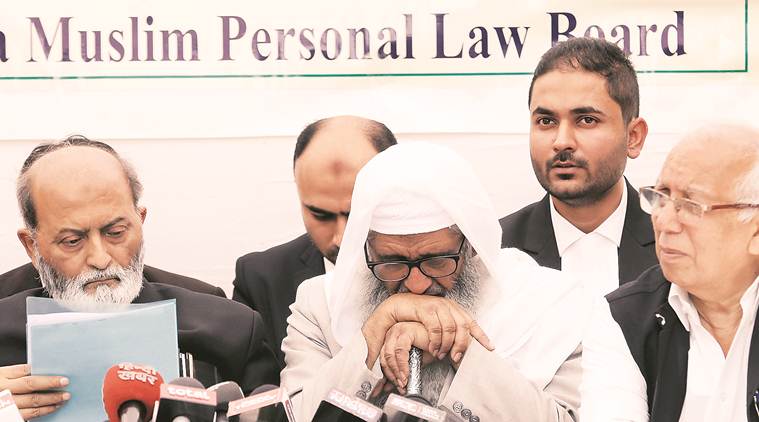WHILE making over 30 references to the demolition of the Babri Masjid, and calling it “an egregious violation of the rule of law”, which took place in “breach of the order of status quo and an assurance given to this court”, the Supreme Court resorted to Article 142 of the Constitution to direct the Central government to allocate five acres of land in Ayodhya to the Sunni Central Waqf Board to build a new mosque.
The Article gives the court necessary powers for “doing complete justice in any cause or matter pending before it”.

Saying “the damage to the mosque in 1934, its desecration in 1949 leading to the ouster of the Muslims and the eventual destruction on 6 December 1992 constituted a serious violation of the rule of law”, the court said the rationale for granting land for the new mosque was based on “equity and good conscience” and the inadequacy of statutory law.
Story continues below this ad
“Equity and good conscience play a supplementary role in enabling courts to mould the relief in order to ensure just outcome,” the court said, while adding that the Sunni Waqf Board did not have evidence to show its possession of the Babri Masjid was ‘exclusive’.
 The unanimous judgment by a five-judge Constitution Bench brought down the curtains on a dispute that began in 1885.
The unanimous judgment by a five-judge Constitution Bench brought down the curtains on a dispute that began in 1885.
The observations are significant as they come against the backdrop of the parties, at the conclusion of the hearing, urging the court to “mould” the relief in such a manner that it reflects “constitutional values”.
“The case canvasses the rule of law, religion and law and conquest, besides a myriad of conflicting interests. These cannot always be comprehended within the available statutory framework applicable to the present facts. This makes the role of the court even more sensitive as it must craft a relief that accords with justice, equity and good conscience,” the court said.
The Supreme Court added, “Where positive law is silent and equity steps in to furnish a source of law, its content is informed by analogous provisions of the law that furnish (as) a useful guide. This ensures that equity operates within a larger legal framework informed by the values which underline the legitimacy of the legal system as a whole.”
Read | Faith establishes birth place: A post script, unsigned
Story continues below this ad
The bench also held that equity “as an essential component of justice” formed the final step in the just adjudication of disputes. “After taking recourse to legal principles from varied legal systems, scholarly written work on the subject, and the experience of the Bar and Bench, if no decisive or just outcome could be reached, a judge may apply the principles of equity between the parties to ensure that justice is done. This has often found form in the power of the court to craft reliefs that are both legally sustainable and just.”
READ | Why Hindus won claim over both the outer and inner courtyard at disputed site
It added, “The complexities of human history and activity inevitably lead to unique contests — such as in this case, involving religion, history and the law — which the law, by its general nature, is inadequate to deal with. Even where positive law is clear, the deliberately wide amplitude of the power under Article 142 empowers a court to pass an order which accords with justice. For justice is the foundation which brings home the purpose of any legal enterprise and on which the legitimacy of the rule of law rests,” the court said.
The bench also refuted the claims of Hindu groups that the idols of Ram under the central dome of the Babri Masjid had existed before the intervening night of December 22-23, 1949. The court concluded that the idols were placed surreptitiously, ruling out the oral evidence given by witnesses from the Hindu sides.
Story continues below this ad
ALSO READ | Why Supreme Court rejected the Allahabad HC judgment on Ayodhya dispute
The verdict clarifies repeatedly it cannot claim against “actions of the Mughal rulers against Hindu places of worship in a court of law today” and that the recourse for such claims is not found in law.
“Our history is replete with actions that have been judged to be morally incorrect and even today are liable to trigger vociferous ideological debate. However, the adoption of the Constitution marks a watershed moment where we, the people of India, departed from the determination of rights and liabilities on the basis of our ideology, our religion, the colour of our skin, or the century when our ancestors arrived at these lands and submitted to the rule of law,” the court said.

 AIMPLB’s Zafaryab Jilani (left) and Kamal Farooqui (right) along with other advocates addressing a press conference in New Delhi after the verdict. (Express photo by Amit Mehra)
AIMPLB’s Zafaryab Jilani (left) and Kamal Farooqui (right) along with other advocates addressing a press conference in New Delhi after the verdict. (Express photo by Amit Mehra)
 The unanimous judgment by a five-judge Constitution Bench brought down the curtains on a dispute that began in 1885.
The unanimous judgment by a five-judge Constitution Bench brought down the curtains on a dispute that began in 1885.






